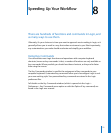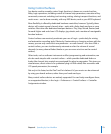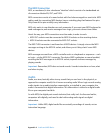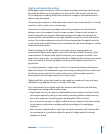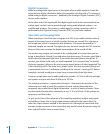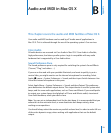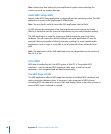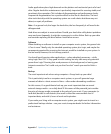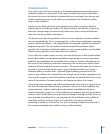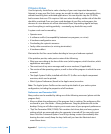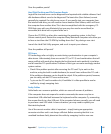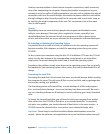
79
B
Appendix
B Audio and MIDI in Mac OS X
This chapter covers the audio and MIDI facilities of Mac OS X.
Your audio and MIDI hardware can be used by all “media-aware” applications in
Mac OS X. This is achieved through the use of the operating system’s Core services.
Core Audio
All audio devices are accessed via Core Audio in Mac OS X. Core Audio is a flexible,
high-performance, low-latency audio system. Logic is compatible with any audio
hardware that is supported by a Core Audio driver.
Sound Preference Pane
The Sound preference pane is only required for switching the system’s Sound Effects
(“Sosumi,” “Ping,” and others …).
If you are on the road with your portable Macintosh, and want to quickly try out a
musical idea, you might want to use the internal microphone for recording. Select
Apple () menu > System Preferences > Sound, and then Input. Switch between Line
In and the Internal microphone in this pane.
Select Apple Menu > System Preferences > Sound, and then Output. This preference
pane determines the default output device. This output device is used for system alert
beeps, and for some audio applications, such as iTunes and iMovie. If you would prefer
to output your system beeps (and playback of iTunes and iMovie audio) via external
Core Audio hardware, select your device here.
Note: You can set an independent level for the alert beep. It is recommended that you
reduce this to the minimum level, or even deactivate alert beeps entirely, when
working on compositions.
You should always select the maximum possible volume level, in order to make full use
of the entire dynamic range, when working with applications that use the default
output.



